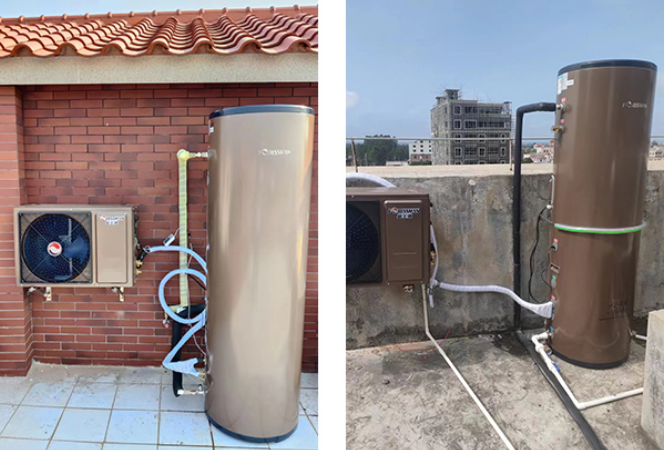What Is a Split System Air Source Heat Pump?
When choosing an air source heat pump, sound emissions and space requirements are crucial factors. Split heat pumps address both concerns effectively by design.
What Is a Split System Air Source Heat Pump?
A split system air source heat pump consists of two units: an outdoor unit and an indoor unit. The outdoor unit is positioned outside to capture energy from the air, while the indoor unit utilizes this energy to heat water for the building. The two units are connected by two pipes that carry refrigerant—one for liquid and one for gas.
The outdoor unit includes a fan and an evaporator. The fan blows outside air over the evaporator, where the liquid refrigerant absorbs heat and turns into gas. This gaseous refrigerant is then compressed by the compressor, increasing its pressure before being transported through a pipe to the indoor unit.
Inside the indoor unit, the refrigerant gas passes through the condenser, where it is cooled and condensed back into a liquid, releasing energy in the process. This energy heats the water for the building. The liquid refrigerant then passes through an expansion valve to reduce its pressure before being sent back through a pipe to the outdoor unit, where the cycle of capturing thermal energy from the air begins again.
Various refrigerants can be used in heat pumps, including fluorinated hydrocarbons like HFCs and PFCs, or natural refrigerants such as propane. These refrigerants differ in their toxicity and environmental impact. It is important to consult with heat pump manufacturers regarding any health and safety concerns associated with the refrigerant and to check its global warming potential (GWP) to understand its environmental effects.
Design and Operation of a Split Heat Pump
A split heat pump features two separate units: an indoor unit and an outdoor unit. The outdoor unit houses all the components that generate noise, including the fan, evaporator, and compressor.
This design allows the indoor unit to remain compact and flexible in placement within your home. It contains only the condenser, circulation pump, and control and safety systems. The indoor unit operates quietly due to the separation from the noisy components and a thoughtfully designed, noise-optimized construction.
The Repeated Heat Generation Process
The heat generation process in a split heat pump can be continuously repeated as needed.
During operation, the fan in the outdoor unit draws in ambient air and directs it to the evaporator (heat exchanger). Inside the evaporator, a refrigerant circulates and absorbs heat from the air, even at low temperatures. As the refrigerant heats up and changes to a warm steam, it is then sent to the electrically powered compressor. The compressor increases the steam's pressure and temperature to the desired level.
The hot steam is transported through thin refrigerant pipes to the condenser in the indoor unit. Here, it transfers its thermal energy to the heating system, cooling down in the process. Before the refrigerant can be used again, it must pass through an expansion valve to return to its original state. Once this is accomplished, the heat generation cycle begins anew.
Benefits of the Split Heat Pump
One of the main advantages of a split air to water heat pump is its nearly silent operation. The design minimizes deep, potentially disruptive noises by shifting them to higher frequencies. Additionally, all split heat pumps feature a night mode that further reduces sound levels, making them suitable for locations with stringent noise regulations, such as terraced housing or health resorts.
Versatile Cooling and Heating
Besides its compact indoor footprint and quiet performance, a split heat pump offers reversible operation. This functionality allows it to both heat and cool rooms as needed. During hot summer months, it can efficiently cool spaces using convectors or surface cooling systems. Furthermore, its modular design allows for easy expansion; system owners can add additional heat pumps if their heating or cooling requirements increase, ensuring continued flexibility.


